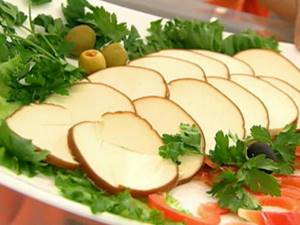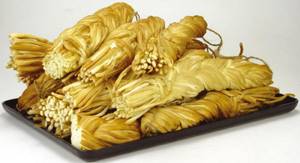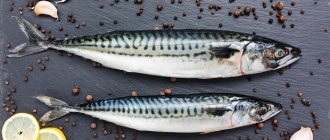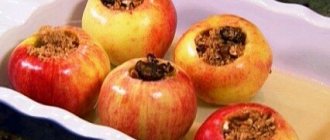Cheeses are by far most people's favorite dairy products. One of the varieties of processed cheese is especially popular - sausage cheese. Many people remember this taste and aroma from their childhood. Only at that time there was only one type of processed sausage cheese, but today there are many of these varieties.
The production technology of this type of product differs significantly from the process of making classic cheeses. We have to figure out whether the beneficial properties of sausage cheese remain after technological processing.
History of creation
If you think that sausage cheese was invented in our country, then you are very mistaken. The birthplace of this product is Scotland. It was there that they first began to make it. One savvy technologist decided to save cheese that had spoiled slightly. He mixed it with oil and soda. Then he heated these ingredients in a water bath. The calorie content of sausage cheese produced then was very different from its modern counterparts. Production technology has changed a lot in recent years. The ingredients remained the same, but cottage cheese was added to them. At the final stage of production, the sausage cheese is smoked using natural smoke. Thanks to this, the product becomes tastier.

History of invention and production technology
Processed cheese, which is the basis for sausage cheese, was invented by Swiss residents Walter Gerber and Fritz Stettler in 1911. And in 1916, the recipe and production technology for his processed cheese were patented by the founder Walter Kraft (Switzerland).
Content:
- History of invention and production technology
- Composition of the product
- Beneficial features
- Possible harm
- Use in cooking
- Selection and storage
In the 50s of the last century, sausage cheese itself began to be produced by the Soviet dairy industry, whose technologists came up with the idea of molding cheese sausages from the technological defects of hard and rennet cheeses, adding butter and cream to them. After shaping, the sausages were melted and, to enhance the flavor, smoked in smoking chambers. Thanks to the smoking process, the processed cheese became aromatic and denser in consistency. At the same time, it was inexpensive, tasty and looked elegant. This is why sausage cheese became so popular, and its popularity has not diminished today.
The technology for producing natural sausage cheese includes several stages.
Preparation of raw materials
As raw materials for the production of sausage cheese, only products of dairy origin should be used: hard and/or rennet cheeses, butter, natural milk cream, secondary products of milk processing (whey, buttermilk). It is also necessary to add salt, spices and food additives to the raw materials (but only those approved for use in the food industry and not more than the permissible standards): melting salts, structure formers, acidity regulators, preservatives, thickeners, antioxidants, sweeteners, dyes, flavors.

To make this unusual cheese, during its creation, “substandard” cheeses were used, that is, cheeses rejected during the technological process. This does not mean that they are spoiled or expired: these cheeses simply have non-critical defects, that is, they do not meet the requirements of standards and technical specifications for:
- appearance;
- consistency;
- structure;
- drawing;
- are deformed;
- have an irregular crust.
After selecting the raw material, it is crushed: the crushed raw material is easy to mix and bring to the desired taste. In order for the raw material to melt well, melting salts (potassium and sodium citrates and phosphates) are added to it.
Maturation of the mixture
In order for all the ingredients inside the resulting cheese mixture to be well distributed and mixed, it must “ripen”. Melting salts do their job at this time: under their influence, the milk proteins swell, which makes it easier for them to bind to each other during further melting. The ripening process is also necessary to ensure that the different structural components of the product do not separate.
Melting process
The cheese mixture, prepared and brought to the required taste, is sent to special cauldrons, in which it melts at a temperature of 70-90°C and constant stirring.
Sausage cheese packaging
To form sausages, using a special syringe, the warm molten mixture is poured into packaging (protein, cutisin, paraffin or polymer). To divide cheese into loaves of a given size, clippers are used, which secure the clip to a long casing strip after filling it with a portion of processed cheese. After packaging, the cheese is hung in cages and cooled to a temperature of 20-30°C.
Smoking cheese

After cooling, the cheese loaves are smoked in smoking chambers for 3 hours at a temperature of 45-60°C. For smoke, wood waste from non-resinous tree species (ash, birch, oak, alder) is used. Smoking gives the product not only a specific taste and aroma, but also exhibits bactericidal and antioxidant effects, as a result of which smoked sausage cheeses are stored longer than their “predecessors” (hard and soft cheeses).
To reduce the cost of the product, many manufacturers replace the labor-intensive and expensive process of smoking in smoking chambers by soaking cheese loaves in chemical “liquid smoke.” Treatment with this food additive provides the product with a smoky aroma and taste, and also has a certain antimicrobial effect. However, this substance itself is an additional chemical ingredient that increases the load on the digestive organs. Unfortunately, the state standard does not prohibit such “smoking”: in this case, the manufacturer is obliged to indicate on the label that it is sausage processed cheese with smoke flavoring.
Calorie content of sausage cheese
Some Russians refuse to use this product. They consider it high in calories and harmful to the figure. But is this really so? Do women who want to maintain a slim body need to exclude sausage cheese from their diet? The calorie content per 100 grams of this product is 269.2 kcal. This is much lower than the indicators of such varieties as “Dutch”, “Maasdam” and “Russian”. Despite the low calorie content, this product still cannot be called dietary.

Smoked cheese: calorie content per 100 grams - 380 Kcal. Proteins, fats, carbohydrates, chemical composition
Energy value (calorie content) of Smoked cheese is 380 Kcal
per 100 grams of product (edible part).
The ratio of proteins, fats and carbohydrates: Property Value
| Calorie content, kcal | 380 |
| Proteins, g | 23,5 |
| Fats, gr | 30,8 |
Product calculator
Enter the amount of Smoked Cheese to calculate its nutritional value
Property Value % of normal
| Calorie content, kcal | 380 | 19 |
| Proteins, g | 23,5 | 15.33 |
| Fats, gr | 30,8 | 68.18 |
Micro- and macroelements in smoked cheese
Smoked cheese contains the following elements: SFA - Saturated fatty acids, Cholesterol, Ash, Water, Organic acids, Sodium, Potassium, Phosphorus, Magnesium, Calcium, Sulfur, Copper, Manganese, Zinc, Iron.
Micro and macro element Meaning
| SFA – Saturated fatty acids, g. | 17,6 |
| Cholesterol, mg | 94 |
| Zola, Mr. | 4,4 |
| Water, city | 38,5 |
| Organic acids, g. | 2,8 |
| Sodium, mg | 850 |
| Potassium, mg | 116 |
| Phosphorus, mg | 545 |
| Magnesium, mg | 54 |
| Calcium, mg | 1000 |
| Sulfur, mg | 235 |
| Copper, µg | 70 |
| Manganese, mg | 0,1 |
| Zinc, mg | 4 |
| Iron, mg | 1 |
Vitamins in Smoked Cheese
Smoked cheese contains the following vitamins: SFA - Saturated fatty acids, Cholesterol, Ash, Water, Organic acids, Sodium, Potassium, Phosphorus, Magnesium, Calcium, Sulfur, Copper, Manganese, Zinc, Iron.
Vitamin Value
| Vitamin B1 (thiamine), mg | 0,05 |
| Vitamin B2 (riboflavin), mg | 0,38 |
| Vitamin B6 (pyridoxine), mg | 0,1 |
| Vitamin B9 (folic), mcg | 19 |
| Vitamin C, mg | 1 |
| Vitamin E (TE), mg | 0,6 |
| Vitamin PP (Niacin equivalent), mg | 6,1 |
| Vitamin B12 (cobalamins), mcg | 1,4 |
| Vitamin D, mcg | 0,7 |
| Vitamin A, mg | 0,25 |
| Beta-carotene, mg | 0,16 |
Calorie content and chemical composition of other products
Product Kcal Proteins, g Fats, g Carbon, g
| American Cheese | 337 | 18,94 | 26,05 | 6,94 |
| Provolone cheese | 351 | 25,58 | 26,62 | 2,14 |
| Brie cheese | 334 | 20,75 | 27,68 | 0,45 |
| Gouda cheese | 356 | 24,94 | 27,44 | 2,22 |
| Gouda or Edam cheese | 357 | 24,98 | 27,69 | 1,67 |
| Munster cheese | 368 | 23,41 | 30,04 | 1,12 |
| Munster Cheese (Low Fat) | 274 | 24,7 | 17,6 | 3,5 |
| Ricotta Cheese (Partly Skim Milk) | 138 | 11,39 | 7,91 | 5,14 |
| Ricotta Cheese (Whole Milk) | 174 | 11,26 | 12,98 | 3,04 |
| Chees Feta | 264 | 14,21 | 21,28 | 4,09 |
| Cheese | 350 | 26,3 | 26,6 | 0 |
| Mascarpone cheese | 412 | 4,8 | 41,5 | 4,8 |
| Russian cheese | 364 | 23,2 | 29,5 | 0 |
| Goat cheese | 290 | 21,3 | 21,7 | 0,7 |
| Philadelphia cheese | 342 | 5,93 | 34,24 | 4,07 |
| Ricotta cheese | 174 | 11,26 | 12,98 | 3,04 |
| Adyghe cheese | 264 | 19,8 | 19,8 | 1,5 |
| Dutch cheese | 350 | 26,6 | 26,6 | 0 |
| Camembert cheese | 324 | 15,3 | 28,8 | 0,1 |
| Sulguni cheese | 286 | 20,5 | 22 | 0,4 |
| Poshekhonsky cheese | 344 | 26 | 26,1 | 0 |
| Moscow cheese | 355,6 | 26 | 26,5 | 3,5 |
| Altai cheese | 355,6 | 26 | 26,5 | 3,5 |
| Green cheese | 355,6 | 26 | 26,5 | 3,5 |
| Kostroma cheese | 343 | 25,6 | 26,1 | 0 |
| Lithuanian cheese | 250 | 27,9 | 14,7 | 0 |
| Latvian cheese | 316 | 23,3 | 24,1 | 0 |
| Ossetian cheese | 355,6 | 26 | 26,5 | 3,5 |
| Baltic cheese | 207 | 29,8 | 9 | 0 |
| Soviet cheese | 385 | 24,4 | 31,1 | 0 |
| Estonian cheese | 355,6 | 26 | 26,5 | 3,5 |
| Emmental cheese | 372,4 | 28,7 | 28,5 | 0,3 |
| Pecorino cheese | 419 | 25,5 | 33 | 0 |
| Ukrainian cheese | 355,6 | 26 | 26,5 | 3,5 |
| Uglich cheese | 347 | 25,8 | 26,3 | 0 |
| Yaroslavl cheese | 350 | 26,2 | 26,6 | 0 |
| Tofu cheese | 76 | 8,08 | 4,78 | 1,88 |
| Green cheese pesto | 380 | 23 | 32 | 0 |
| Kurt cheese | 260 | 25 | 16 | 2,7 |
| Cottage cheese | 317 | 7 | 31 | 2,5 |
| Asiago cheese | 122 | 10,9 | 8,11 | 1,15 |
| Fontina cheese | 389 | 25,6 | 31,14 | 1,55 |
| Smoked cheese | 380 | 23,5 | 30,8 | 0 |
| Smoked cheese braid | 320 | 19,5 | 26 | 2,2 |
| Cheese Buko | 200 | 8,5 | 17 | 3 |
| Sausage cheese | 275 | 21,2 | 19,4 | 3,7 |
| Mexican cheese | 282 | 24,69 | 19,4 | 3,41 |
| Anari cheese | 195 | 11 | 15 | 2 |
| Halloumi cheese | 255 | 25 | 16 | 2,6 |
| Cheese Banon | 200 | 8,5 | 17 | 3 |
Source: https://BonFit.ru/kalorii/syr-i-tvorog/drugie-syry/kalorii-kopchenyy-syr/
Sausage cheese: benefits
What should you pay attention to first when purchasing a particular product? Of course, on its composition. Let's say you want to buy sausage cheese. What benefits will your body receive from consuming it? This type of cheese contains valuable minerals (calcium, phosphorus, magnesium) and vitamins (A, E, D, group B). However, you need to eat it in moderation - no more than 100-150 g at a time.
Useful properties of sausage cheese:
- improving the condition of teeth, hair, nails and bones;
- normalization of heart function;
- improved vision;
- preventing dehydration of the body.
To avoid spoilage of the product, it should be stored not in the freezer, but on the middle shelf of the refrigerator. Otherwise, the cheese will lose not only its beneficial properties, but also its characteristic aroma and taste.
How to choose
Smoked sausage cheese
In order to purchase delicious, good quality smoked cheese for the table, several significant evaluation criteria should be taken into account when choosing a product. These include:
- Compliance with storage requirements - the product must be kept strictly in refrigeration equipment at a temperature of 6-8 degrees C.
- Correct packaging - the formation of the finished product in the form of a loaf, a smooth surface, possibly with a paraffin shell, which serves as an indicator of product quality. With artificial polymer packaging material, the shelf life of cheese is achieved up to 90 days. You should pay attention to the uniformly adjacent shell close to the product, and there should be no bubbles or voids.
- The use of natural smoking, determined by certain criteria - information on the packaging material, the presence of a delicate smoked aroma without strong foreign odors, the presence on the surface of the cheese of a thin layer of brown crust obtained as a result of natural processing.
- The composition of the product is a minimum of artificial ingredients. The highest quality product contains exclusively natural dairy ingredients, as well as seasonings and melting salts. It is imperative to check the type of fat that was used in production, since the use of any type of vegetable oil for these purposes significantly reduces the quality of smoked cheese.
If it is possible to visually see the cut of the product, it is necessary to make sure that it has a dense structure and does not stick to the knife blade during the cutting process.
You should also pay attention to the cost, due to the fact that the price of a high-quality product should not be too low, so in this case, saving will become inappropriate and even harmful to your own health.
Smoked cheese can act as a healthy and tasty component of various cold and hot snacks, including delicious salads, sandwiches, and canapés. In addition, the product looks great as an independent dish as part of a sausage and cheese slice.
Read: Sunny flower: the benefits of sunflower seeds
If you watch the video, you will find out how cheese is useful:
https://www.youtube.com/watch?v=7VgAsS3TtE4
Read along with this article:
- Edam cheese, calorie content, general information, recommendations for consumption
- Recommendations for making mozzarella cheese, composition and…
- Recommendations on how to prepare cucumaria, information about…
- Spinach - what kind of plant is it, what properties does it have,...
- What is the composition and how many calories in Adyghe cheese
- Foods containing large amounts of protein: benefits for the body
- Recommendations on how to prepare rolled oat flakes...
- About the benefits of salted lard and what contraindications it has...
- Calcium content in food: eating for health benefits
Possible harm
Today, stores offer a wide selection of sausage cheese. It is brought from different cities of Russia and even from abroad. But is sausage cheese equally healthy? Any product can cause harm to the human body. And this type of cheese is no exception. Nowadays, there are unscrupulous companies that are chasing profit. They violate the requirements for sausage cheese manufacturing technology. For example, various food additives and cheap vegetable fats can be added to the bulk. Phosphate supplements are harmful to people with kidney disease. The presence of citric acid provokes stomach diseases. Ready cheese is often treated with liquid smoke, which should not happen.
Cooking methods

In principle, any product that has undergone appropriate processing can be called smoked. This statement can also be applied to cheeses. There are two main methods by which smoked cheese can be prepared both at home and in production:
1. Cold. The product is processed at a temperature range from 21 to 32 degrees. The process lasts from two weeks to 30 days. A distinctive feature of the method is that it does not require constant monitoring of parameters and can easily take place in the absence of a person.
2. Hot. In this case, the temperature is much higher (from 38 to 88 degrees). This process can no longer be left to chance. It must be monitored periodically, and human presence in this case is mandatory.
In practice, there is another way. Smoked cheese is obtained by processing the raw material using liquid smoke, as well as adding various food colorings and flavoring additives. For this procedure, cheeses of lower grades are usually taken. But conscientious manufacturers, as a rule, do not resort to this method.
Contraindications
Despite its rich composition and many beneficial properties, sausage cheese can be harmful to the consumer. To avoid health problems, contraindications should be studied in advance. Who should avoid using this product? People suffering from atherosclerosis, obesity, kidney, stomach and cardiovascular diseases. For those who consider themselves a healthy person, we recommend choosing fresh and high-quality cheese. Otherwise, food poisoning cannot be avoided.

Compound

The content of nutrients is quite high if the cheese is made correctly and using high-quality ingredients:
- vitamin A, which gives youth and elasticity to the skin, increases immunity, improves vision;
- B vitamins, which are involved in almost all metabolic processes, including the synthesis of hormones;
- vitamin E and C are powerful antioxidants necessary for strong immunity and excellent health;
- calcium, which prevents osteoporosis and dental problems;
- potassium and magnesium, necessary for the normal functioning of the heart, blood vessels, and nervous system;
- copper, which increases the level of hemoglobin in our body;
- phosphorus, which improves digestibility and protein synthesis, affecting metabolism;
- sulfur, necessary for potency, good condition of hair, skin, nails;
- iron, which supplies cells with oxygen.
For your information. Some additives (berries, dried fruits, honey, spices) also have a beneficial effect on our body.
Sandwiches with sausage cheese
Don't know what to cook for breakfast? We offer you an excellent option - crispy sandwiches with sausage cheese. They can be eaten as a separate dish or served with vegetable or chicken soup.
Ingredients:
- 200-300 g sausage cheese;
- a loaf of white bread or baguette;
- a little butter.
Preparation:
1. It is best to buy white bread for toast. We cut each piece into 4 parts.
2. Open the package of butter. The product must comply with GOST standards (this is indicated on the wrapper). Place a piece of butter on each toast.
3. Cut the sausage cheese into slices. And then in halves. Cover the bread and butter with them.
4. Preheat the oven to 180 degrees. Place a baking sheet with sandwiches into it. We time it for 10 minutes. After the specified amount of time, take out the baking sheet. The bread was soaked in butter and the cheese was slightly browned. Sandwiches are served both hot and cold.
If you have a lot of sausage cheese and you don’t know where to put it, then you can prepare a salad with the addition of this product. Everything is very simple. Grate hard-boiled eggs and cheese on a coarse grater. Grind the garlic using a special press. Mix these ingredients in one cup. Season with mayonnaise. It turns out very tasty.
Types of smoked cheese
There are several varieties of smoked product, which are made from the corresponding varieties of famous expensive cheeses. In addition, there is processed cheese that is subjected to a smoking procedure, called sausage cheese.
The most popular varieties of smoked cheese:
- Chechil (in the form of a pigtail) - made from the milk of sheep and goats. First, a special starter and rennet are added to the warm raw materials. Next, it is heated again until curd fragments are formed, from which thin cheese threads are made, woven into a braid, and placed in the prepared brine. The ripened cheese is put into the smoking room.
- Smoked sausage cheese. This variety involves the addition of cottage cheese, butter, cream, and certain seasonings to hard cheese. All components are thoroughly mixed, after which the product is melted. From the resulting mass, final products are made in the form of loaves, cooling in refrigeration chambers. Next, the cheese is put into the smokehouse for a while. The product has a delicate taste with notes of light smoked aroma.
There are several varieties of smoked cheese that have become popular in European countries. Among them:
- smoked Gruyere cheese - produced in Switzerland, firm consistency with a sharp, nutty taste; smoked Gouda cheese - made in the Dutch city of Gouda, whose name it bears, is prepared on the basis of fresh cow's milk, has a pleasant taste with a creamy tint, the aroma intensifies as time passes;
- smoked Mozzarella cheese - a young Italian product made from the milk of buffaloes or cows, has a light, slightly fresh taste with a firm consistency;
- smoked Cheddar cheese - a common variety of cheese from the village of Cheddar in England - an elastic product with nutty aroma with a tangy taste and slight sourness.
Read: How to eat cottage cheese after a workout, the benefits and harms of the product
Popular product

These days you can find smoked cheese in any grocery store. Photos of this popular product can be seen on billboards and brochures. Trade enterprises offer this original and very tasty product in a fairly wide range. The photographs show that the product has a characteristic brownish tint, which it acquires during special processing. Under the influence of high temperature, vulcanization of the surface layer occurs. It becomes darker. This is precisely what distinguishes it purely externally from an ordinary product. Natural seasonings are sometimes used to add a special taste. They cover the outside of the cheese and, in addition to the aroma, give a special effect to the finished product. These cheeses also melt well, so they can be used to make soups, pizza, hot sandwiches and spaghetti sauces. And if this product is crushed and added to batter, then meat or fish fried with such a mixture will acquire an unusual piquant taste.










